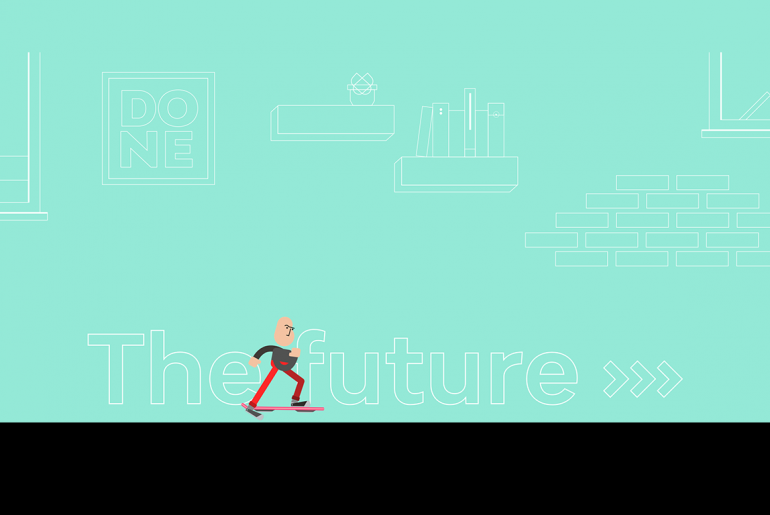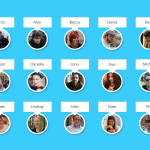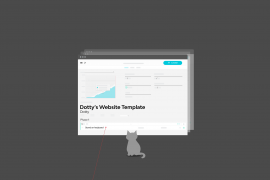
Iteration is easy. But starting again… that’s harder. You can’t fall back on the tried-and-true when the going gets tough. You’re climbing up onto the highwire without a safety net.
So when we decided that the new version of Streamtime would be a back-to-square-one reconstruction of our system to respond to the radically and rapidly shifting business landscape, we knew it was a big risk. And we knew, to have any chance of success, we needed to have clear ambitions to work towards and big ideas to get us there.
We needed to take a comprehensive, sober look at the very concept of project and studio management. We needed to figure out what was working, what wasn’t, what was missing. And we needed to look further afield for inspiration.
In later blogs, we’ll talk about how what we discovered shaped our vision for the future — but first, here are the big conclusions we came to after a long while with our thinking hats on:
1. Nobody truly loves project/studio management software. At best, it’s a functional service.
Okay, we knew this one already. That didn’t stop it from hurting a little — and it didn’t stop us from needing to fix it.

2. Our relationship with numbers needs to change.
If you’re in any way involved with a business, you can’t escape numbers (as much as you might like to, especially if you’re a creative). That means, if we want to have a good work life, we all have to have a healthy relationship with numbers. They need to benefit us, make us happy.Obviously we’re a long way from that. Here’s why we think that is:

Numbers are soulless.
They’re cold. Lifeless. And yet we insist on trying to use them to quantify and represent people. We expect them to, on their own, guide us — but that results in us spending a great deal of time trying to divine human insights from them.
Instead, we need to figure out a way for numbers to play a role in immediately illuminating our day jobs, we need them to be part of a service that works for us… instead of requiring us to work to understand them.

Numbers make us lie.
If you’ve worked in a creative studio (or any other business that uses timesheets really), you’ll probably be familiar with the feeling of opening up your timesheet and entering ‘7.5 hours, 7.5 hours, 7.5 hours’ over and over.
According to the numbers, you’re supposed to work 7.5 hours every day — so 7.5 is the number you feedback into the system. But how honest is that? How many days did you actually start working exactly at 9am and finish right on time? Exactly. Timesheets are a system designed to, ostensibly, collect accurate data — but the culture surrounding them causes you lie through your teeth, making for inaccurate data.

Numbers alienate.
Think back to maths class in high school for a second — really try and transport yourself back into that room. Live in that feeling for a moment.
Okay. How did that feel? If your answer was ‘yeah, pretty good’, congratulations — you’re either breathing the rarified air of being Somebody Who’s Good With Numbers, or you’re a robot.
For everyone else (a majority of the population it seems), that aversion to numbers likely stuck around for life. People who aren’t comfortable with numbers have reactions ranging from aversion to outright derision — which is a major problem when you’re expecting your team to engage with them on a daily basis.

Even when we know numbers are inaccurate, we prefer them to no numbers at all.
As we mentioned above, people routinely lie in their timesheets. When we pause for a moment to consider the dynamic of timesheets, that shouldn’t be surprising. And yet, we keep asking our team members to fill them out — because we’re addicted to numbers.
This extends beyond timesheets. We try to quantify individual team members using a single, simple, performance-based numbers system. We pull estimates out of thin air, and then hold our teams to these abstractions. We demand reports that (we pretend) will explain profoundly complex failures in a spreadsheet.
And this all comes from the same, root cause — we’re so terrified of operating blind that we prefer bad data to no data at all. Not only is this highly dysfunctional, it’s dangerous — and, worryingly, it’s deeply embedded in the culture of many companies.

Numbers make us do really weird things.
Our strange desire for false data can lead to even stranger habits — like project managers standing over creatives, twisting their arms into falsifying their work hours to avoid uncomfortable conversations with superiors or clients.
These same people would likely never advocate said creative walking in the office of their boss and lying to them about how much they’ve been working… but when it’s just numbers on a spreadsheet, it seems to barely even rate as a little white lie. What’s actually occurring is the destruction of data fidelity and the complete undertiming of the time anyone puts into using the system — but it’s perceived to be a simple act of people-pleasing.
From hiding money in vaguely-worded parts of budgets to inflating (and outright fabricating) staff involvement in projects, we’re using management systems as smoke-screens to avoid having honest conversations and confronting hard truths.

3. Technology at work sucks. Like, really sucks.
Think about the software you use at home. Like Netflix. Or Apple Music. Or any number of cool fitness apps. Now think about the software that you use at work. Yeah.
Somehow we’ve just come to accept that the businesses we work for (even if they’re part of billion-dollar behemoth corporations!) will deliver us much worse technology experiences than we have at home. We’re used to hearing ‘that’s just how it is’ from the CIO or CTO or ‘the tech guy’, and having to make peace with it.

Business software design is frozen in time.
Business software design is in a similar place to where industrial design was at the beginning of the 20th century — only just starting to find its feet. But interface design for software started in earnest around 1968… which means we’re almost 50 years into it, and only starting to piece together ideas for making business software intuitive, enjoyable, aesthetically pleasing and just generally fit for humans.
We can’t afford to wait another 50 years to get it right.

Feature creep is an arms race that nobody wins.
We get it. Everyone wants to be able to make quick comparisons, because quick comparisons make for quick decisions. And nobody has a lot of time. The problem is that, for software, quick comparisons are done by looking at lists of features side-by-side.
You see it in reviews, and ‘Top Ten Best X!’ blogs. Tables with columns filled with ticks (or not filled, in the case of the losers). That’s how we assess software.
But this doesn’t take into account the quality of those features. It doesn’t take into account how the product works as a whole. And, vitally, it doesn’t take into account how necessary those features are — because as much as ‘more features is better’ seems like sound logic at first blush, it’s a problematically shallow analysis.
The truth is that many of the features that are included in a product simply don’t get used by most people. And every time one of these superfluous features get added, it consumes development resources, makes the system more complex and dilutes the intuitiveness and clarity of the product.
As much as it’s risky to defy convention and focus on less features (implemented better), it’s a better than the alternative — creating a lumbering Frankenstein’s monster of a product that isn’t friendly to use.

We work for our work software.
Because the software we use at work is so primitive and isn’t really centered around our needs as people, we put a massive amount of work into using it and don’t get a lot out of it. Instead of having to sift through layer upon layer of complex user interface, most of the ‘work’ should be automated to deliver us information we want and need.
Or, to put it simply — like any good machine, what it does for us should be more valuable than the time and effort we put it.

4. The future of work is changing.
The creative industry — hell, every industry — is changing rapidly. Services are becoming commoditised. People are asked to work harder and faster and to a higher standard — often for less.
We’re realising that culture is much more important than we’d ever anticipated — that it’s the operating of a business.
We’re becoming used to automation (especially in our personal lives), and we’re trying to figure out whether we want end-to-end products or specialist products, full-service systems or an ecosystem of integrations.
And yet, despite all of this volatility, despite the need for software that empowers us as we’re faced with a more demanding and confusing world… business software is barely evolving at all. The ‘use’ of data is still slow, unintelligent backwards-looking. Frankly, it’s just straight-up letting us down.

We got 99 problems but the lack of a plan ain’t one.
So that’s a long list of big, fundamental problems up there. But to us… that just means there is a whole lot of room for improvement.
In the next blog of this series, we’ll get into our plan for tackling these problems… which starts with some soul searching.







